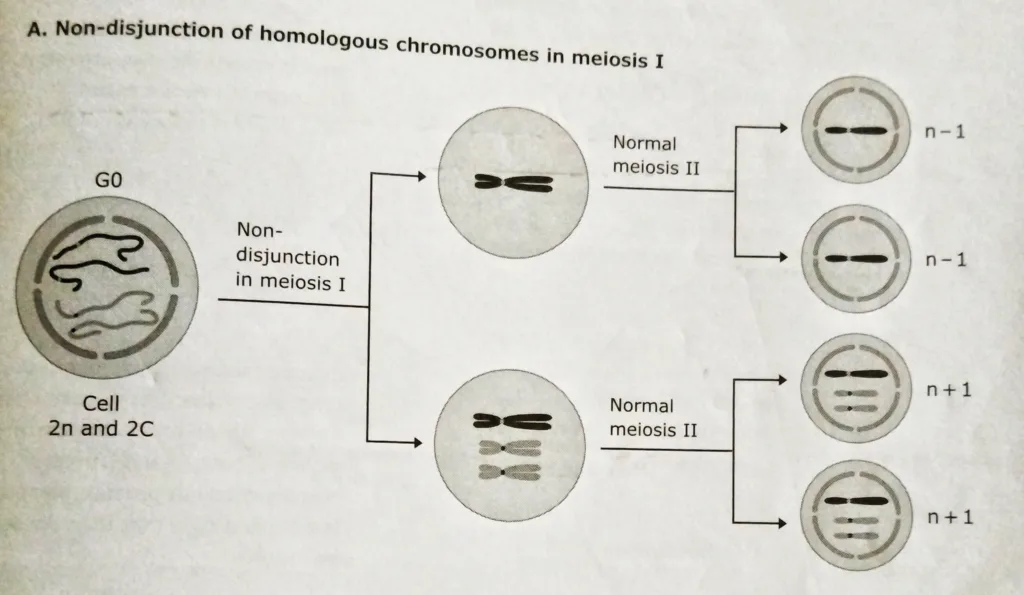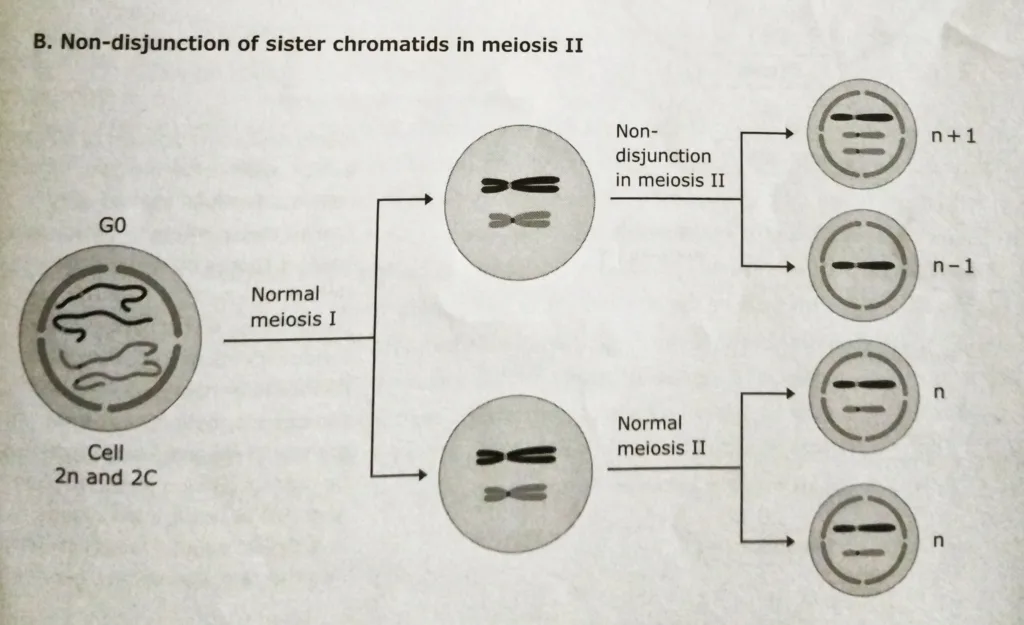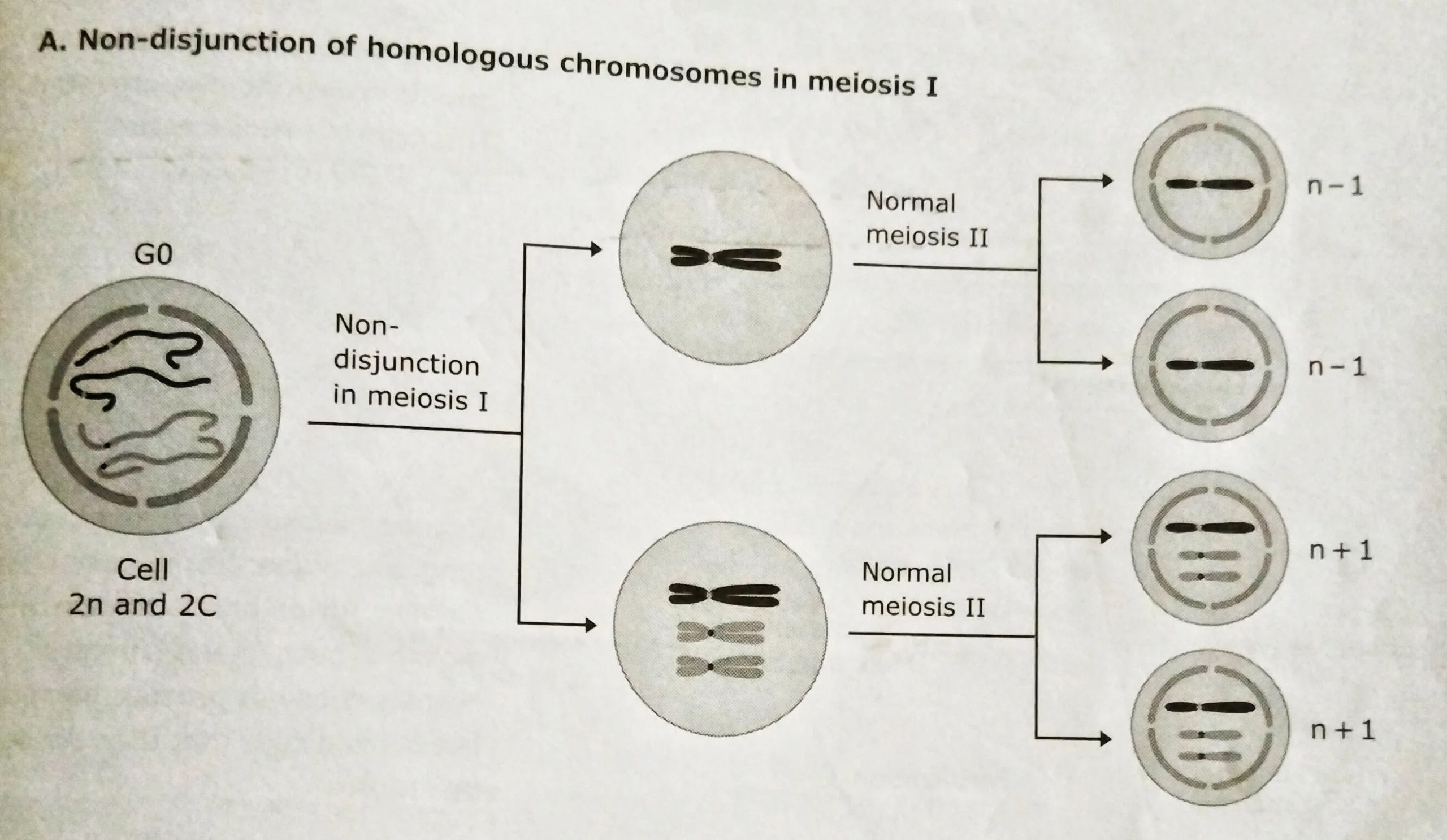Table of Contents
Nondisjunction and aneuploidy are the abnormalities of the mitosis and meiosis cell division. Nondisjunction is the failure of attached homologous chromosomes to detachment during anaphase of mitosis or meiosis cell division. Aneuploidy is a condition in which a cell has an imbalanced number of chromosomes. In a diploid organism, the most common forms of aneuploidy are monosomy and trisomy.
The mechanism of Nondisjunction and aneuploidy:
During mitosis, each chromosome replicates and the two sister chromatids separate, which one going to each daughter cell. Similarly, during meiosis, the two homologous chromosomes separate during the first division, and then the two sister chromatids move to separate cells during the second division.
A normal mitosis or meiosis results in all the progeny cells receiving complete sets of chromosomes. However, homologous chromosomes and sister chromatids fail to separate properly during mitosis and meiosis. The failure of chromosomes to separate properly during mitosis and meiosis is called nondisjunction. Nondisjunction produces cells or gametes with extra or missing chromosomes; it is the primary cause of the aneuploidy.
The Consequences of Nondisjunction and aneuploidy:
During meiosis, non-disjunction can occur during meiosis I or meiosis II. In meiosis I, both homologs move towards the same pole when non-disjunction of homologous chromosomes occurs. In meiosis II, non-disjunction of sister chromatids occurs with both chromatids going to the same pole. Depending on where in meiosis this non-disjunction occurs, same gametes will end up with one or more extra chromosomes and the other will end up with lesser chromosomes than a complete set.
Diagram of Non-disjunction of homologous chromosomes in Meiosis I:

Diagram of Non-disjunction of sister chromatids in Meiosis II:

Other related notes:
- Cell Cycle Checkpoints: https://thebiologyislove.com/cell-cycle-checkpoints/
- RAS- MAP kinase pathway:
Facebook link: https://www.facebook.com/share/p/yLBcLPrzYvedptf8/?mibextid=oFDknk
Instagram link: https://www.instagram.com/p/C7lxtipNeXy/?igsh=MWEwOHViODV5M3F0dw==

